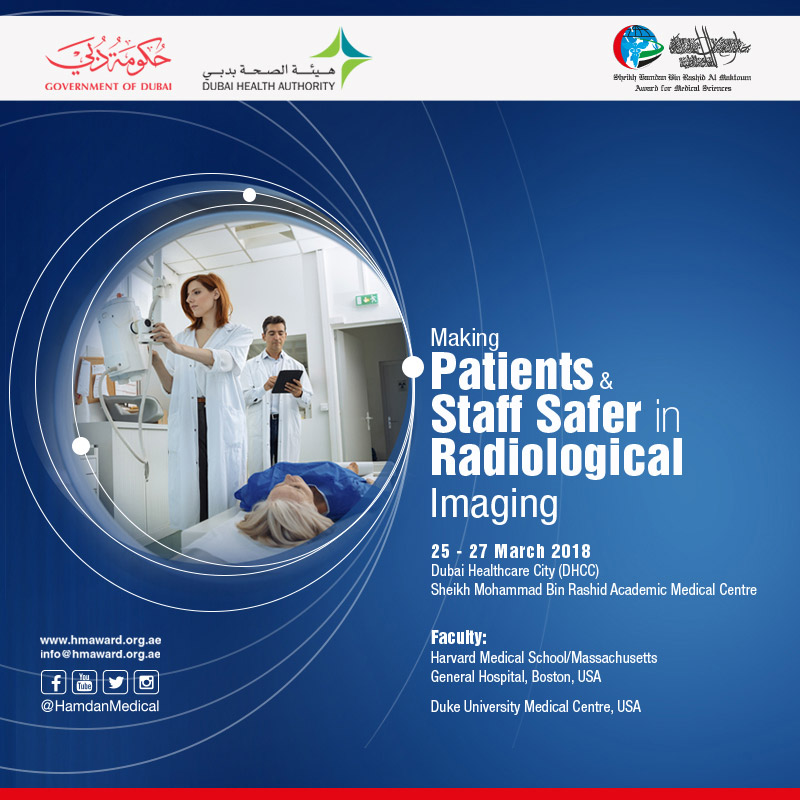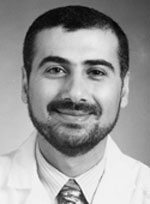Dr. Hussein Saadi
UAE Awards
Hamdan Award for Original Research Paper Published in Emirates Medical Journal
2005-2006
Dr. Saadi was born in Lebanon in 1960. He obtained his medical degree from the American University of Beirut in 1 985. He subsequently trained in Internal Medicine and Endocrinology at Case Western Reserve University in Cleveland, Ohio, USA.
From 1991-1994, Dr. Saadi was an Assistant Professor of Medicine at Case Western Reserve University. From 1994-1998, he worked as a Staff in the Departments of General Internal Medicine and Endocrinology at the Cleveland Clinic Foundation where he also had a co-appointment as a Clinical Associate professor of Medicine at the College of Medicine of The Pennsylvania State University, Hershey, Pennsylvania.
In 1998, Dr. Saadi joined the Department of Internal Medicine at the Faculty of Medicine and Health Sciences, UAE University as an Assistant Professor of Medicine. He got promoted to Associate Professor of Medicine in 2003. He holds a co-appointment as a Senior Consultant Endocrinologist at Tawam Hospital. Dr. Saadi is a Diplomate of the American Board of Internal Medicine, and the American Board of Endocrinology, Diabetes and Metabolism. He is also a fellow of the American College of Physicians, and the American College of Endocrinology. He is also a member of several other medical associations such as the Endocrine Society, the American Thyroid Association, and the American Diabetes Association.
Dr. Saadi's research interests are in metabolic bone disease, osteoporosis, diabetes mellitus, thyroid disorders, obesity and hyperlipidemia.
He has published extensively especially in the area of metabolic bone disease and has presented his work at several international meetings. He is currently the principal investigator of 2 externally funded research grants and has applied for funding from the Institute of National Health for a future project in collaboration with colleagues in the U.S. He has been awarded "The Best Individual Research Project Award" by the Faculty of Medicine and Health Sciences, UAE University for his presentation at The Sixth Annual UAE University Research Conference; April 24-26, 2005 for his research on vitamin D deficiency in Arabian women.
His winning EMJ article is based on a research grant from Sheikh Hamdan Award for Medical Sciences that aimed at the establishment of a normative bone mineral density database for UAE women and at identifying the factors that may influence their bone density. He and his colleagues found that UAE women, like other Arabian women, have lower bone density compared with US/European Caucasian women and hence are at high risk for future development of osteoporosis and fractures. They also found that multiparity, physical inactivity and low dietary vitamin D intake are significant predictors of low bone density, in addition to genetic predisposition. They concluded that the above factors should be the subject of public health interventions to prevent osteoporosis and the morbidity and mortality of associated fractures.
Based on data collected from the above study, Dr. Saadi and his colleagues demonstrated a very high prevalence of vitamin D deficiency in UAE women and concluded that vitamin D. deficiency appears to be largely attributed to insufficient sunlight exposure. They also showed that vitamin D deficiency in this population was associated with deleterious effects on bone metabolism. To investigate the influence of vitamin D receptor (VDR) genotype on bone metabolism and bone density, Dr. Saadi and his colleagues determined VDR genotype frequencies in a sub-sample of 161 (111 pre- and 50 postmenopausal) women. The frequencies of the genotypes obtained within this population were 36% GG homozygotes (previously denoted BB), 44.1% AG heterozygotes (previously denoted Bb) and 19.9% AA homozygotes (previously denoted bb). Allele and VDR genotype frequencies identified by endonuclease Bsml were very similar to those observed in a Caucasian woman with the AG (or Bb) genotype being the most common. They found no difference in concentration of bone formation and resorption markers or bone density among the different genotypes, findings that are in line with observations from most other studies. These results were recently published in the journal Bone.
Dr. Hussein Saadi is awarded for his original article published in the Emirates Medical Journal from inside UAE for the year 2005-2006.

